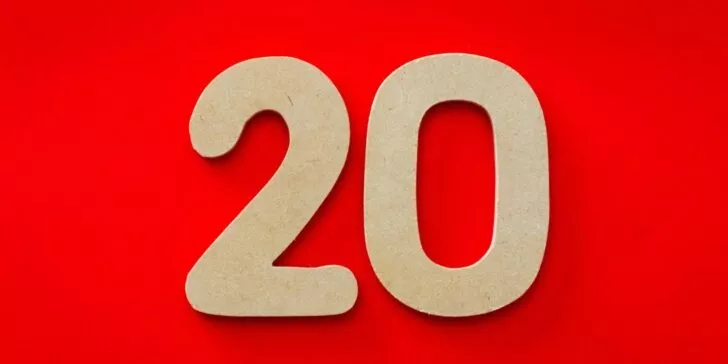Recently I got a press opportunity (this blog being press… of sorts) that was quirky and interesting – but I was deeply unqualified to write about it. Luckily, I knew who should.
I take great pleasure for, 10 years ago, very stealthily and cleverly (or possibly not at all stealthily or cleverly, but whatever, it worked) helping to set Kris up with his wife, one of my best friends and about to be the mother of his son. Kris is not only one of the sweetest people I know (hence the set-up) but a lifelong musician and video-game expert. And I don’t mean “expert” like “he plays a lot of WoW.” I mean he knows more of the history, storytelling, industry and culture of gaming than I could ever understand.
So I asked if he’d spend a final pre-baby evening at the show he describes below. It’s fascinating even if (like me) you’re not a gamer – and so well-written that he’s making me look bad. I’ve got to step up my game. Thanks a lot, Randazzo.
Official stuff: Kris’s tickets were provided by the producers. But as always, opinions are unbiased and his alone. However, if you’d like to see The Legend of Zelda: Symphony of the Goddessess, it’s playing through the end of the year across the country.
The concept of arranging video game music for a live performance is nothing new, but the creators of The Legend of Zelda: Symphony of the Goddessess have taken the concept more seriously than others, and the results are nothing short of spectacular.
For the uninitiated, The Legend of Zelda is a series of video games. The first made its American debut on the Nintendo Entertainment System in 1987 and captivated gamers instantly. Perhaps one of the most endearing aspects of the game was its music. Originally composed by Koji Kondo, the man responsible for the famous Super Mario Bros. theme (yes, that one), the music of The Legend of Zelda quickly became a legend of its own. To this day, it remains one of the most recognizable pieces of video-game music ever produced, and the main theme, along with music from the various Zelda games over the years, has played an integral role in making Zelda one of Nintendo’s biggest franchises. It’s as epic as it is endearing, and has cultivated an intensely loyal fan base. For this reason, it’s no surprise that in celebration of the series’ 25th anniversary, Nintendo has given us a chance to hear these songs performed live in the form of a symphony.
Fans and first-timers alike can appreciate this beautifully-arranged, well-thought-out and -constructed show. It takes a more thoughtful approach than similar performances, such as Video Games Live. While VGL also features an orchestra performing video-game music, it is bogged down by overpowering electric guitars, prerecorded segments, and a lack of intelligent symphonic arrangement. Symphony of the Goddesses is more akin to a John Williams performance. The source material has been lovingly crafted into genuine symphonic movements, while still maintaining a sense of fluidity, adding the occasional interludes and extras. Put simply, it’s as classy as it needs to be, and it’s never not fun.
I had the opportunity to interview creators, showrunners and producers Chad Seiter and Jeron Moore before the show, and it was immediately obvious that these two are passionate about the project. A pair of lifelong Zelda fans that know as much about video games as they do music, Seiter and Moore have gone to great lengths to remain faithful to the source material while adding touches of their own personality.
“They say I stayed too faithful, and I completely disagree with that,” said Seiter. “It’s not my business to be doing that. Do things go into different textures and settings? Absolutely, and is that something that I do? Yes. But I do it in a way that doesn’t change the nature of the piece from its original concept.” Moore added, “Foundationally, what we always wanted to do is be highly respectful of the original material, and not interpret it too crazily, because we pass this on to Kondo-san, and he’s going to check it out. We don’t want him to be flipping through it and be like, ‘What did they do?’ Which I was very nervous about.”
The duo shared the process of getting a show like this off the ground, some of their favorite Zelda moments, and their aspirations to orchestrate the upcoming Legend of Zelda: The Wind Waker HD for Wii U. (Sadly, that fell through). It was a tremendously interesting interview, and they were very gracious and honest with their responses. If you’d like to read it in full, check it out at g33klife.com.
Getting back to the show itself, from the moment I arrived, it was obvious that this was no ordinary event. When you think of an evening at the symphony, you might have visions of formal attire, and you wouldn’t be wrong. However, amidst the jackets and dresses, there was a different crowd, composed almost entirely of young people, some in elaborate costumes. As it happened, the venue was hosting a costume contest before the concert began, but I’d be willing to bet these people would have dressed up anyway. That’s the sort of show this is; that’s the kind of experience the source material inspires.
The show began with a stunning overture that took the audience through an overview of the Zelda franchise as a whole, highlighting some of the more significant titles in the series. Here we got our first taste of the concert’s visual element. For the duration of the performance, video clips of highlights from various games played on a large screen above the orchestra as it played pieces that accompanied those moments.
After the overture, Moore and Seiter took the stage to introduce the format of the event. They took some time to explain the nature of symphonic movements, and their intent to tell the story of The Legend of Zelda, as well as convey the emotions of the games through their music and video segments. Truth be told, I’ve been to this show before, but this venue offered much more intimate seating than larger ones with open-air sections, which made for a vastly superior experience. As a long time fan of this series, being close enough to actually see the strings on the violins was quite moving.
The performance itself wasn’t flawless, but overall the New Jersey Symphony Orchestra did an exemplary job. They may not have been the tightest group I’ve ever heard (there were some timing issues throughout), but concertmaster Brennan Sweet’s exquisite performance more than made up for any minor shortcomings. Unfortunately, some of his most impressive work was drowned out by the rest of the orchestra, particularly his lead in “Song of Storms.” Nonetheless, watching him perform was worth the price of admission alone. Through a stroke of luck, I ran into him in the parking lot on the way out of the show, and he informed me that the entire orchestra only rehearsed the material once, making those negligible flaws in the performance all the more forgivable. The orchestra earned themselves a standing ovation more than once, and they came back for three encores.
To say that this show is something worth experiencing would be an understatement. If you’re a fan of the video games, it’s a no-brainer. The music selection is so smart that even if they don’t play your favorite song, it’s hard to argue that they didn’t choose some of the best music the series has to offer. If you’re not a gamer, perhaps the show will inspire you to pick up a controller and embark on a new experience. If you are, maybe it will make you want to check out another symphony that isn’t based on video games. Either way, The Legend of Zelda: Symphony of the Goddesses deserves all the positive attention it’s gathered over the last year. The show is now in its “Second Quest,” featuring new material in addition to some old favorites from the first run.




